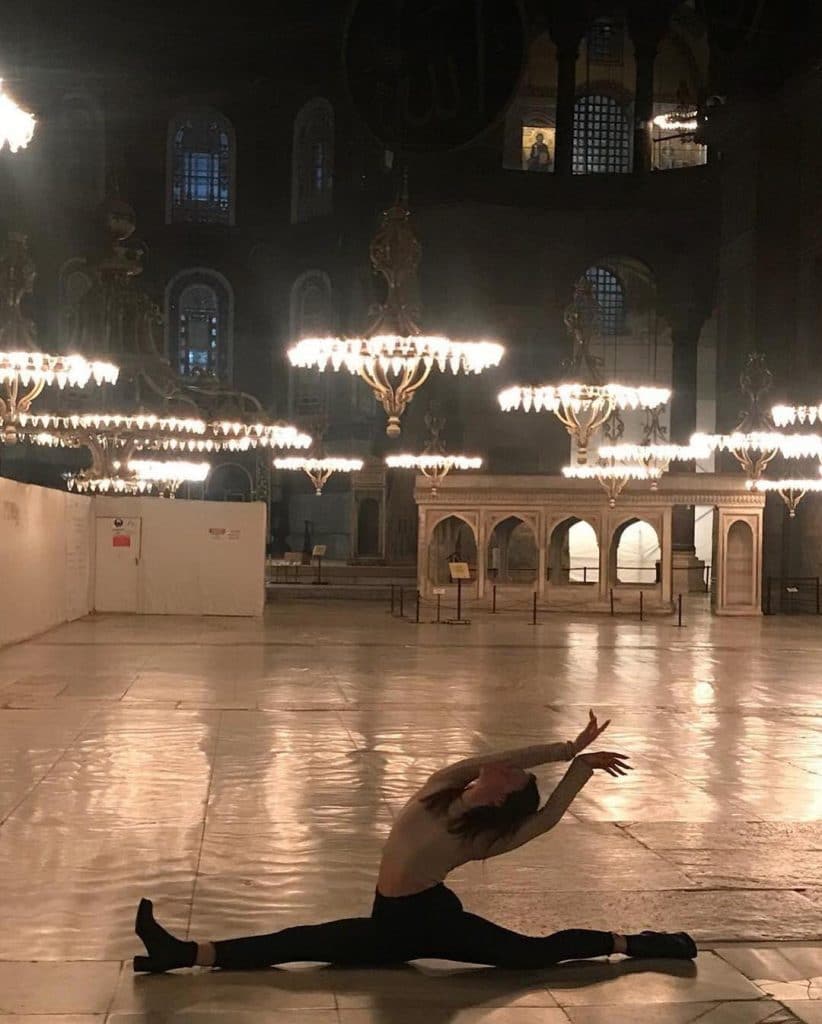“The birth of Islam is an example of what anthropologists call ‘pristine state formation‘— the building of political hierarchy and some type of centralised authority where none existed before.” is stated in The Narrow Corridor. Muhammad was the leader in that state-building project, with the initial mandate of judge in disputes between individuals and clans. And almost a century ago, the third time building of ‘holy wisdom‘ —in that Hagia Sophia — began in A.D. 532 when Nika Revolt hit Constantinople. In National Geographic documentary, we see a coincidence that people were resentful of high taxes that Justinian had imposed. It was completed in 5 years to impress the strength of the Byzantine emperors.
In Arabia, where there is no real state but just tribes, people became more individualist with fostered economic activity and developed norms and practices did not bring solutions. In spite of the norms, the Constitution of Medina came into floor in 622. Successively in 628, the Covenant granted the permanent protection to places of worship. What we should remember here is Nietzsche’s ‘will to power‘ to increase their power over the others. Yet, the city of largest religious building with its enclosed space magnified him. I believe the statement “Istanbul will be surely conquered; what a good commander is the conqueror…” is sufficient proof to explain that will.

An Ottoman Emperor, with his rich knowledge languages —Greek and Latin— and cutting edge military mind, Mehmed II conquered Constantinople in 1543. Aftermath, he did not destroy Hagia Sophia, which is a century older than Islam, rather converted it to the mosque. And this transformation job was given to Aksemseddin the advisor of emperor. Hagia Sophia should have been ready til the friday prayer. According to the legend, no matter how much effort was made Aksemseddin understood that the reason was the devil’s occasions for the workers. Upon that, he prayed and God confined the devil to a marble in Hagia Sophia. The Christian relics were covered and the holy wisdom opened to muslim world.
The building experienced several damages, though, Architect Sinan‘s props kept it alive long time. After 482 years Islamic role, holy wisdom was brought in the middle of seesaw by Mustafa Kemal Atatürk and İnönü’s cabinet. The relics and mosaics of church appeared again. It became one of the unique museums in the world with its mission to two religions.

In 2004, an association for historical artefacts and environment (they have no official website) brought the case in front of the State Council and it was rejected in 2008. In 2015, this time the same association went to the Supreme Court, nonetheless, the reject reason this time was incompetence. One year later, the same association requested for examination of Atatürk’s sign in the decision paper.
According to 2014 stats, it became most visited museum in Turkey with the revenue of 18 million dollar. During that time, Hagia Sophia was subjected to the different issues for the activities done in museum. But, it was the museum that is face of Turkish tourism. On 29 May 2020, the Conquest Sura, a section of the Quran, was recited at the old main cathedral of Byzantine Empire. That was the burning question, lastly.

The respondent of 2016 case was presidency of Turkish Republic and presidency lost the case. The 2 July 2020 court decision was the cancellation of 1935 cabinet decision. The only side who can object to the decision in 30 days is presidency but the authority’s words are clear enough not to that.
Is the Hagia Sophia Decision Legal in International Law?
Turkey is state party to UN’s Convention Concerning the Protection of the World Cultural and Natural Heritage. Hagia Sophia is in the UNSECO World Heritage List under the name of Historic Areas of Istanbul as cultural site. State Council emphasises the Article 6 of the convention regarding to respect the sovereignty of States. The functioning of the cultural site is belong to the State
The Preamble indicates “the cultural and natural heritage are increasingly threatened with destruction not only by the traditional causes of decay, but also by changing social and economic conditions…”. If we suppose that there won’t be any changes or damages in Byzantine mosaics like shielding effect or light screening (there should not be any face according to Islam while praying), the State fulfils its obligation to ensure that modifications do not affect the international value.
Supporters of the decision in international law gives as the examples of Toledo Cathedral and Qurtuba Mosque in Spain. Whereas, the opponents asserts that the decision has no beneficial effects to the nation, instead, it would have national economic costs the country as there won’t be considerable entry fees. According to the survey of a poll company (see below), youth thinks that there is no need for this kind of transformation and it is consciously made for the change of agenda or political reasons. And, one of the claims of them is that if they needed a place to pray, there was Blue Mosque a few meters away. Also, another critic is the false restoration like one in Trabzon of 9 Hagia Sophia Churches in Turkey, it was restored in a wrong way and the mosaics were destroyed.

But the member state is responsible for priorly notifying such changes on the cultural sites. That seems the only legal objection in international arena. UNESCO deeply condemned the decision and declared that there would be further meetings on that issue.
The foreigners who did not see Hagia Sophia Museum yet will be able to see Hagia Sophia Mosque without paying fee, if the modifications are proceeded with no damage. I hope, this won’t be any war crime under the destruction of cultural heritage. In terms of responsibility, international blocked system give enormous hazards to the related state nationals. We need more tight-binding agreements in international arena, and open-ended negotiations, indeed, may induce the political aims.
